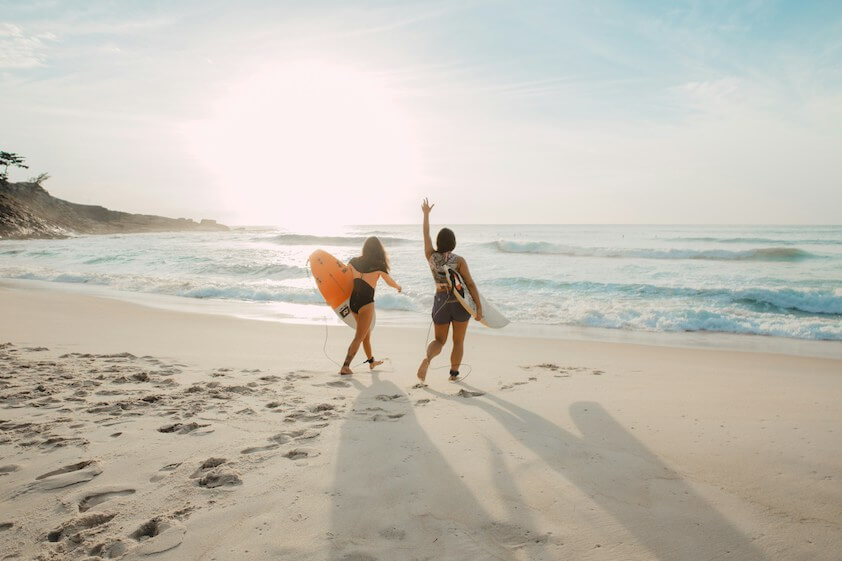Capturing your surf session while staying in sync with the best sets can feel like a balancing act. You want to document those epic waves without sacrificing your time in the water or missing the action. The good news? It’s totally possible with the right approach and a bit of planning.
In this article, you’ll learn how to shoot your surf session effectively without compromising the thrill of catching the perfect wave. From choosing the right gear to timing your shots, we’ll guide you through strategies that let you enjoy the surf and still nail those unforgettable moments.

Importance Of Capturing Your Surf Sessions
Documenting your surf sessions preserves moments that are often fleeting. The crashing waves, your stance as you ride, and the challenges you overcome all become memories you can revisit. Capturing these experiences adds a visual element to your surfing progress and achievements.
Recordings let you analyze your technique. You can spot mistakes in your pop-up or how you adjust through turns. Reviewing videos helps refine your skills with precise observation.
Share your experiences with others who enjoy surfing or want to start. Photos and videos connect your adventures to a broader community. They inspire conversations and foster learning.
Evaluate your performance by revisiting specific sets caught on camera. This promotes better understanding of effective paddling, timing, and wave selection. Watching your actions unfold adds a layer of self-awareness that surfing alone won’t provide. Thanks to Insta360’s intuitive editing tools, you can quickly isolate key moments and share them effortlessly.
Choosing The Right Equipment
Selecting equipment designed for surf photography improves your ability to capture dynamic moments amid the action. Different tools offer unique advantages based on shooting requirements and conditions.
Camera Options for Surf Photography
Choose a camera with fast autofocus, a high frame rate, and the ability to handle variable lighting. Look for compact models for easier movement or options that support interchangeable lenses to adapt to diverse conditions.
Wide-angle settings are useful for capturing the broader surf environment, while telephoto capabilities help you focus on distant subjects. Opt for cameras with weather-sealing if photographing near water without additional protection.
Essential Accessories for Success
A water housing protects your equipment from sprays and submersion, especially critical for in-water shots. Invest in comfortable swimwear and fins to improve movement and stability while shooting.
Use a remote or timer to reduce camera movement and capture sequences without needing to handle the device during critical moments. Plan your setup to minimize distractions and maintain focus on capturing the best wave sets.
Finding The Best Angles And Positions
Adjusting your shooting angles transforms the impact of your surf photography. Alternate between perspectives to capture a variety of compositions and movements.
Positioning Yourself Strategically
Target the impact zone, where waves break dynamically. This spot lets you capture maneuvers like turns and barrels. Stay slightly inside or alongside the zone for closer frames.
For water-based angles, use bodyboards or paddles to move efficiently. Align yourself parallel to the wave when surfers move toward you, or shift further inside for turns if riders move away. On land, explore unique vantage points like elevated cliffs or secluded headlands for clear, less obstructed views.
Understanding Lighting And Tides
Shoot during early morning or late evening when natural light is soft. Position the sun behind for vibrant textures or in front to highlight silhouettes. Alternate often to create varied lighting effects.
Plan around tide shifts since wave shapes change with water levels. Use tide charts to predict wave conditions and locate accessible spots. Always keep the horizon level for precise compositions.

Timing Your Shots Without Missing Waves
Getting the right shot depends on observing wave activity and synchronizing your response to it. Capturing the surfer at the peak action point ensures dynamic and engaging images.
Anticipating Wave Sets
Study the rhythm of the ocean to identify patterns. Waves often arrive in sets with discernible gaps. Observe for consistency in these intervals to align your shots with the best waves. Focus on the break zone for crucial moments like turns or barrels. Position yourself where you can view the surfer’s approach while maintaining safe distance from heavy breaks.
Balancing Surfing and Shooting Duties
Planning makes switching between surfing and shooting smoother. Look for a setup close to your surf spot for minimal interruptions. Waterproof camera housings help protect gear while you’re in the water. Limit continuous shooting to preserve energy for surfing. As an alternative, enlist a friend or set up a static camera to capture motion automatically, so your session remains the priority.
Editing And Enhancing Your Surf Photos Or Videos
Fine-tuning your surf photos or videos maximizes their impact and showcases key moments effectively. Use editing techniques to adjust visual elements and highlight dynamic action. If you’ve captured footage using a 360 camera, you’ll also have the flexibility to reframe shots in post-production, choosing the most compelling angles after the fact.
Tools For Post-Processing
Adjust visual elements like exposure, contrast, and color balance to bring out natural tones. Look for tools that offer precision controls for highlights and shadows.
Optimize video quality by stabilizing footage and trimming unnecessary parts. Add smooth transitions to maintain flow. Use software with layering capabilities to include text overlays or effects. Format outputs for platforms where you plan to share them.
Tips For Highlighting The Best Moments
Identify frames that show peak action, such as surfers mid-maneuver or riding inside the barrel. Sort through sequences by focusing on the sharpest and most visually compelling shots. Using a device like Insta360 ensures you capture every angle of the action, even in fast-moving, unpredictable surf conditions.
Increase contrast and boost saturation slightly to draw attention to the waves and surfer. Crop tightly around the subject if needed for impact. For videos, timestamp and sequence key moments like takeoffs, turns, or wipeouts. Add background music sparingly to match the energy without overpowering clips.
Common Mistakes To Avoid
- Relying Solely on Autofocus: Manual focus offers more precision when capturing fast-moving waves. Autofocus often struggles with unpredictable motion.
- Ignoring Wave Patterns: Observe breaks and swells to predict where waves will form. Missing patterns reduces the chance of capturing key moments.
- Using Single Shot Mode: Continuous or burst modes increase the likelihood of getting the right frame in dynamic scenes. Single shots often miss the peak action.
- Choosing the Wrong Shutter Speed: Shutter speed directly affects image clarity. For panning shots, aim for speeds of 1/20–1/30 seconds to balance motion blur and sharpness.
- Overlooking the Best Angles: Without alternating positions, your shots may lack variety. Experiment with perspectives from both water and elevated land locations.
- Failing to Prepare Equipment: Improperly set cameras result in missed opportunities. Pre-set focus and adjust exposure for changing light conditions.
Steps like these refine surf photography and minimize mistakes that compromise capturing dynamic moments.
Conclusion
Capturing your surf sessions while staying fully immersed in the waves is all about preparation, timing, and creativity. With the right gear, thoughtful positioning, and a keen eye for detail, you can document unforgettable moments without compromising your time in the water.
Every wave you ride holds a story worth sharing, and refining your techniques ensures those stories are told beautifully. By balancing your passion for surfing with the art of photography, you’ll create lasting memories and elevate your connection to the sport.




